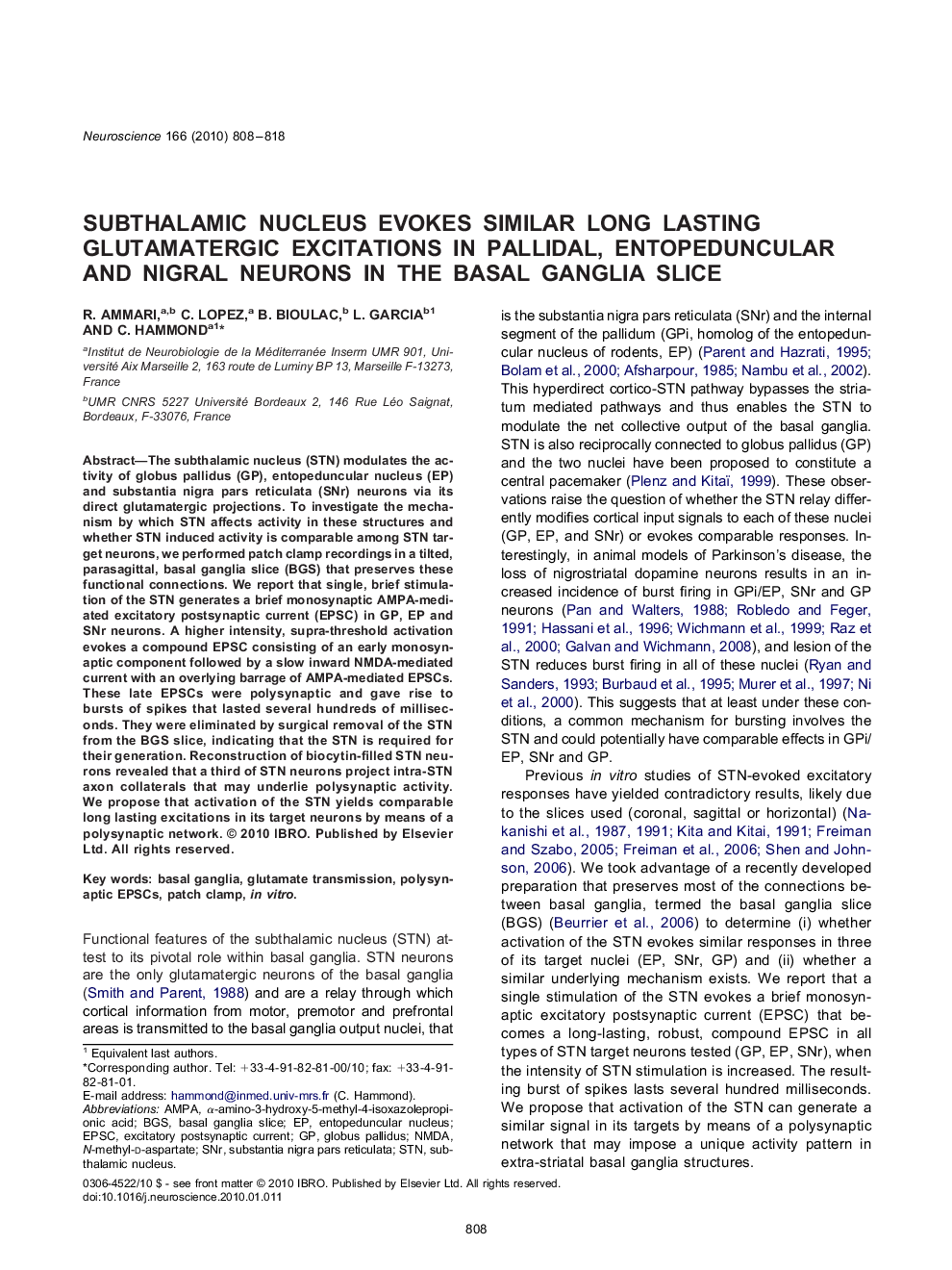| Article ID | Journal | Published Year | Pages | File Type |
|---|---|---|---|---|
| 4339513 | Neuroscience | 2010 | 11 Pages |
The subthalamic nucleus (STN) modulates the activity of globus pallidus (GP), entopeduncular nucleus (EP) and substantia nigra pars reticulata (SNr) neurons via its direct glutamatergic projections. To investigate the mechanism by which STN affects activity in these structures and whether STN induced activity is comparable among STN target neurons, we performed patch clamp recordings in a tilted, parasagittal, basal ganglia slice (BGS) that preserves these functional connections. We report that single, brief stimulation of the STN generates a brief monosynaptic AMPA-mediated excitatory postsynaptic current (EPSC) in GP, EP and SNr neurons. A higher intensity, supra-threshold activation evokes a compound EPSC consisting of an early monosynaptic component followed by a slow inward NMDA-mediated current with an overlying barrage of AMPA-mediated EPSCs. These late EPSCs were polysynaptic and gave rise to bursts of spikes that lasted several hundreds of milliseconds. They were eliminated by surgical removal of the STN from the BGS slice, indicating that the STN is required for their generation. Reconstruction of biocytin-filled STN neurons revealed that a third of STN neurons project intra-STN axon collaterals that may underlie polysynaptic activity. We propose that activation of the STN yields comparable long lasting excitations in its target neurons by means of a polysynaptic network.
